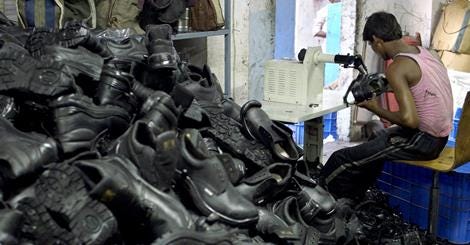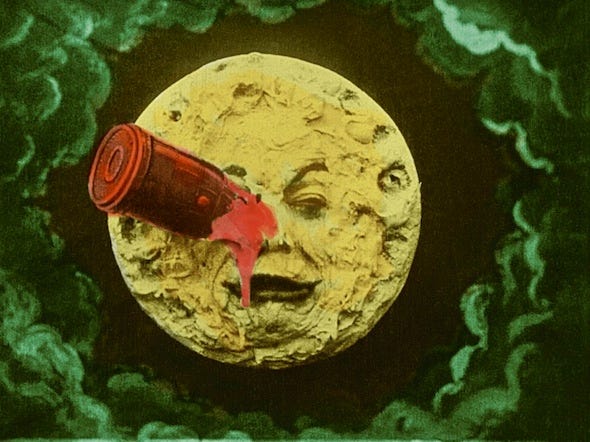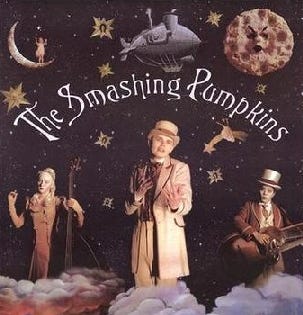So What, Who Cares (vol 2, issue 78) Why this is a fun year to treat American retail news as entertainment
Hello and welcome to a brand new week! Apple's World Wide Developers' Conference is going on this week, so this newsletter may get a tad tech-y on Wednesday or Friday. You've been warned.
So, how's the new newsletter schedule working for you all? Let me know what you think (Twitter and email). Also, heads up to the alert @monica_msk for correctly pointing out that among the great literary depictions of the modeling world, the Lunel Agency of Mistral's Daughter (Judith Krantz, 1983) stands alone.
*

If you are the type of person who loves to watch American retail brands go through crises and reinventions, this is your year. J. Crew is very publicly getting nailed with blowback from a very loyal audience -- sales were down in 2014 as longtime customers complained they could no longer find the staples they relied upon -- and the Gap is struggling with a perceived lack of knowing what the heck to do. So if you're the type of person who loves stories analyzing where brands went wrong and who's likely to save whichever iconic American casualwear brand ... last year was great for this stories, but this is your year. Just set up the Google alerts now.
So what? It's a tough time to be a mass market brand, especially if your target customer used to be fairly into spending money. The definition of "luxury" as it applies to middle-class (and upper-middle-class) consumers has shifted from "big is the new luxe" to brands that proudly flaunt their limits and their narrow focus (vol 1, issue 29; vol 2, issue 16).

Then there's the fast-fashion component (vol 1, issue 7). On the one hand, specialty retailers are getting killed by chains that have perfected fast fashion (vol 2, issue 44), so there's pressure to adapt or die (Gap is reportedly going to be adopting a fast-fashion strategy.) On the other hand, there's a brewing cultural awareness of exactly what fast fashion means for the people who make it and the planet that produces it: witness the press that fast-fashion documentary The True Cost has garnered.
Product stories that stress environmental impact and fair labor practices are going to become a thing in retail (vol 1, issue 24; vol 2, issue 27), the same way "organic" has become a thing in groceries and presaged a tailspin for Big Food (vol 2, issue 29).

And just as we've seen a rise in gardening, DIY canning and other domestic pursuits in the decades following the great "We're eating what?" awakening sparked by Eric Schlosser's Fast Food Nation and the documentary Super Size Me, we're likely to see a rise in "slow fashion" and thrifting-as-chic once we move out of the outrage-and-despair reaction to the fast fashion phenomenon and into the "How can I avoid being complicit in it?" stage.
Who cares? You, the American shopper, very well might. In the near-term: sales-conscious people could clean up at the Gap last fall when Dress Normal landed with a thud (vol 1, issue 51), and the nice thing about brand confusion is that it leads to really great sales if you're in the minority that doesn't care about a "more European palette" or a stutter in ballet-flat quality.
But you know else cares about this? Retail employees. It is no fun when you're suddenly out of a job with little to no notice. Just ask any former Wet Seal employee.
*

Today's moment in pop culture: A colorized version of Georges Méliès' 1902 film A Trip to the Moon is available on Netflix, and you should block out 16 minutes of your life to watch it.
The colorized film has been scored by Air (appropriate, given the timeless and unearthly stuff they produced with their 1998 album Moon Safari) and the experience of watching a movie where all 13,335 frames were hand-colored more than a century ago ... it's mind-blowing. There's a gorgeous, organic quality to the film that makes it feel startlingly intimate, as if you could reach out and touch the rich velvet in the costumes.
The movie basically starts off looking like a staff meeting at Hogwarts -- and I wonder if the people who came up with the moving photographs in the movie used A Trip to the Moon as visual inspiration -- and just gets more lunatic (ha!) from there. The adventures on the moon double as a convenient visual primer for colonialism as an unexamined fact of everyday life in the 1900s.
This flick is a big deal in cinematic history for two reasons: It's considered the beginning of special effects in movies, and it established visual-editing-as-narrative-device for films.

The movie's distinctive visual vocabulary has been referenced repeatedly through pop culture -- check out the Smashing Pumpkins' "Tonight, Tonight" for an obvious homage, or The Simpsons' "La mort d'un chat sur la lune."
Restoring the film was less a restoration job than a wholescale visual effects project, said Tom Burton, the executive director of Technicolor Restoration Services, in a phenomenal piece that ran in Smithsonian magazine.
You can watch a black and white version of the movie here, but I highly recommend firing up Ye Olde Streaming Netflix or making friends with someone who has Netflix, because this movie will ricochet around your imagination afterward in the best way.
*
Are there typos? I apologize in advance. The only editing class I did not get an A in was copyediting.
Did you miss an issue of So What, Who Cares? The archive is here.
Would you like a run-down of all the books and other pop culture picks ever mentioned in this newsletter? Then check out the Pinterest board. (Note: None of the links are affiliate links; I do not make money off anything I link to.)
If you really like So What, Who Cares?, tell a friend to subscribe.

